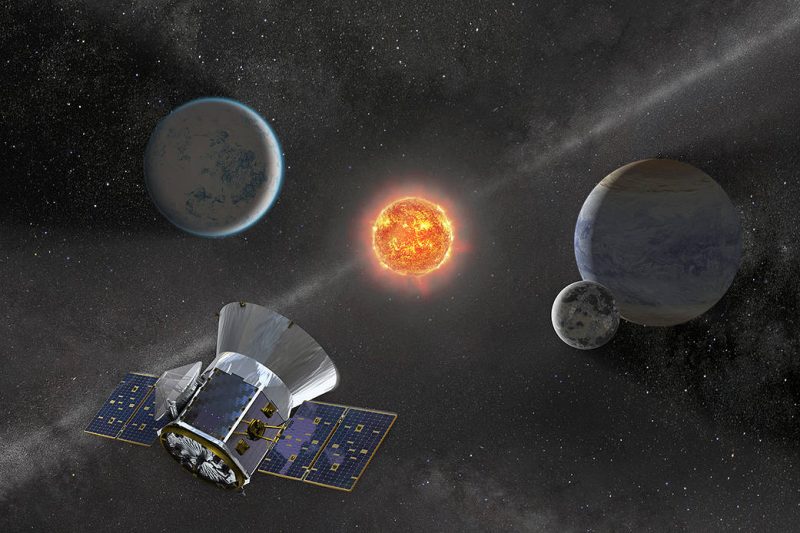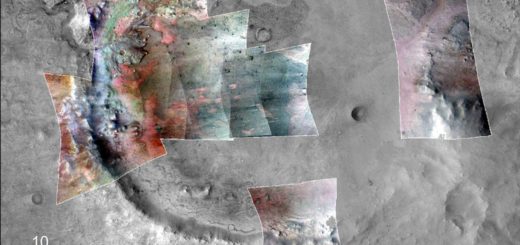TESS’s Exoplanet Catalog Grows To Over 2,200 Worlds

A few decades ago, astronomers thought planets orbited other stars, but they hadn’t really seen any. Now, we know thousands of distant planets – known as exoplanets – of the billions thought to exist in our Milky Way galaxy. Most exoplanet discoveries have come from space-based telescopes like Kepler. That mission ended with more than 4,000 exoplanets known, but the Transiting Exoplanet Survey Satellite (TESS) has taken over where Kepler left off, and, as of last month (March 23, 2021), NASA said that TESS has found over 2,200 additional candidate planets – called TESS Objects of Interest (TOI) – orbiting bright nearby stars. Hundreds of those may be smaller, rocky worlds like our Earth.
Details about this latest haul of exoplanets in TESS’s growing catalog were published in a draft version of a new paper on arXiv on March 24.
Lead author Natalia Guerrero at the Massachusetts Institute of Technology (MIT) said in a statement:
The exciting thing is to look at the map of TESS exoplanets as a kind of to-do list – with 2,000 things on it.
Woman holding a microphone with a stage behind her.
Astronomer Natalia Guerrero at the Massachusetts Institute of Technology is lead author of the new paper about TESS and its planet discoveries. Image via Natalia Guerrero/ NASA.
How did TESS scientists find these new worlds?
TESS looks for planets as they transit in front of their stars, as seen from Earth. When a planet transits, TESS measures the tiny dip in brightness of the star, as small as 0.1 percent. Jessie Christiansen, a research scientist at NASA’s Exoplanet Science Institute, noted:
It’s an incredible body of work, a rich stockpile of exoplanet candidates for the community to mine and explore for years to come.
This is exciting news, and builds on previous discoveries to show that our galaxy is filled with planets of many different kinds. These worlds range from “super-puffs” that are as large as Jupiter but only about 1/100th as massive, to “hot Jupiters” orbiting very close to their stars, to super-Earths that are a bit larger than Earth but smaller than Neptune. Others are small and rocky just like Earth or Mars.
It should be noted that many of these are still candidates, and are waiting for further confirmation as to their existence. About 120 have been confirmed so far, with many more to come. As with other telescopic surveys of exoplanets, the vast majority tend to be later confirmed as real planets, with only a small amount of false positives. Confirmation can require ground-based observations using gravitational measurements, high-resolution imaging and stellar characterization.
A few highlights of what TESS has discovered so far:
– Pi Mensae c was the very first planet discovered by TESS. It is a “mini-Neptune” and now known to be one of at least two planets orbiting its star, which is 60 light-years away.
– TOI-700 d was the first rocky Earth-sized exoplanet to be found orbiting in the habitable zone of its star, the region where temperatures could allow liquid water to exist on a planet’s surface. It is just over 100 light-years away, and orbits a red dwarf star. There are at least two other planets of similar size in this system.
– TOI-125 was the first multi-planet system discovered by TESS. These planets orbit a sun-like star over 360 light-years away. There are three mini-Neptunes known so far, TOI-125 b, TOI-125 c and TOI-125 d, as well as two possible smaller worlds. Mini-Neptunes are smaller than Neptune but larger than a typical super-Earth.
– TOI-1338 b was the first world found by TESS that is reminiscent of Tatooine from Star Wars, a planet orbiting two stars. It is 1,300 light-years from Earth.
– LHS 3844 b was the first “ultra-short-period” planet found by TESS. It is a hot super-Earth that orbits its star in only 11 hours! It is 50 light-years away, with an estimated surface temperature of 989 Fahrenheit (531 Celsius). That’s a bit hotter than Venus in our own solar system.
– TOI-1690 b, primarily known as WD 1856 b, is a gas giant, like Jupiter or Saturn, but survived its star becoming a red giant and then finally into a white dwarf.
– TOI-849 b is a weird one, a planet only three times larger than Earth, but 40 times as massive. It is thought to be the remaining core of a former gas giant planet. At 700 light-years away, it also orbits very close to its star, with a year less than one day long.
These are just a handful of the worlds found by TESS so far, and there will be many more to come. TESS is now in its extended mission that will fill in gaps in its almost all-sky survey, covering both domes of the night sky over the northern and southern hemispheres. There is still a lot of work to do, with the promise of many more cool discoveries to be made. As Guerrero said:
Now the community’s role is to connect the dots. It’s really cool because the field is so young, there’s still a lot of room for discovery: those ‘Aha’ moments.
Many of the exoplanets that TESS discovers should be ideal for follow-up observations by NASA’s James Webb Space Telescope (JWST) and ESA’s Atmospheric Remote-sensing Infrared Exoplanet Large-survey (Ariel) mission, according to Christiansen, who said they:
will explore many of these planets in exquisite detail, allowing us to better understand exoplanet composition, formation, and migration.
From the paper:
The TOI Catalog will support the enduring legacy of the TESS mission by providing the list of planet systems which the exoplanet investigations of the next few decades will target.
TESS completed its 2-year primary mission in August 2020, and is now well into its extended mission phase. During the first year, TESS observed 13 different sectors of the sky seen from the Southern Hemisphere, and then turned its attention to the northern sky in the second year. Each sector is a 24-by-96-degree strip of the sky, and TESS spends about a month surveying each sector. Now, TESS has returned to watching the northern sky again for its extended mission.
Earth-like planet in space.
Artist’s concept of TOI 700 d, the first Earth-sized exoplanet that TESS found in the habitable zone of its star. This planetary system is 100 light-years away in the constellation Dorado. Image via Goddard Space Flight Center/ Wikipedia.
There are currently 4,367 confirmed exoplanets and 5,853 other candidates discovered so far, according to NASA’s Exoplanet Exploration website. These are from all telescopic detections, both ground-based and space-based. As TESS continues to find, and confirm, more planets in the months and years ahead, those numbers are sure to keep growing.
Bottom line: NASA’s TESS space telescope has discovered over 2,200 additional exoplanet candidates orbiting distant stars. That’s in addition to the 4,000+ exoworlds known when TESS went into space nearly three years ago, on April 18, 2018.



 Creators of mankind
Creators of mankind Description of “Tall white aliens”
Description of “Tall white aliens” Where they came from?
Where they came from? About hostile civilizations
About hostile civilizations The war for the Earth
The war for the Earth “Tall white aliens” about eternal life
“Tall white aliens” about eternal life Video: “Nordic aliens”
Video: “Nordic aliens” Aliens
Aliens Alien encounters
Alien encounters The aliens base
The aliens base UFO
UFO Technology UFO
Technology UFO Underground civilization
Underground civilization Ancient alien artifacts
Ancient alien artifacts Military and UFO
Military and UFO Mysteries and hypotheses
Mysteries and hypotheses Scientific facts
Scientific facts


















